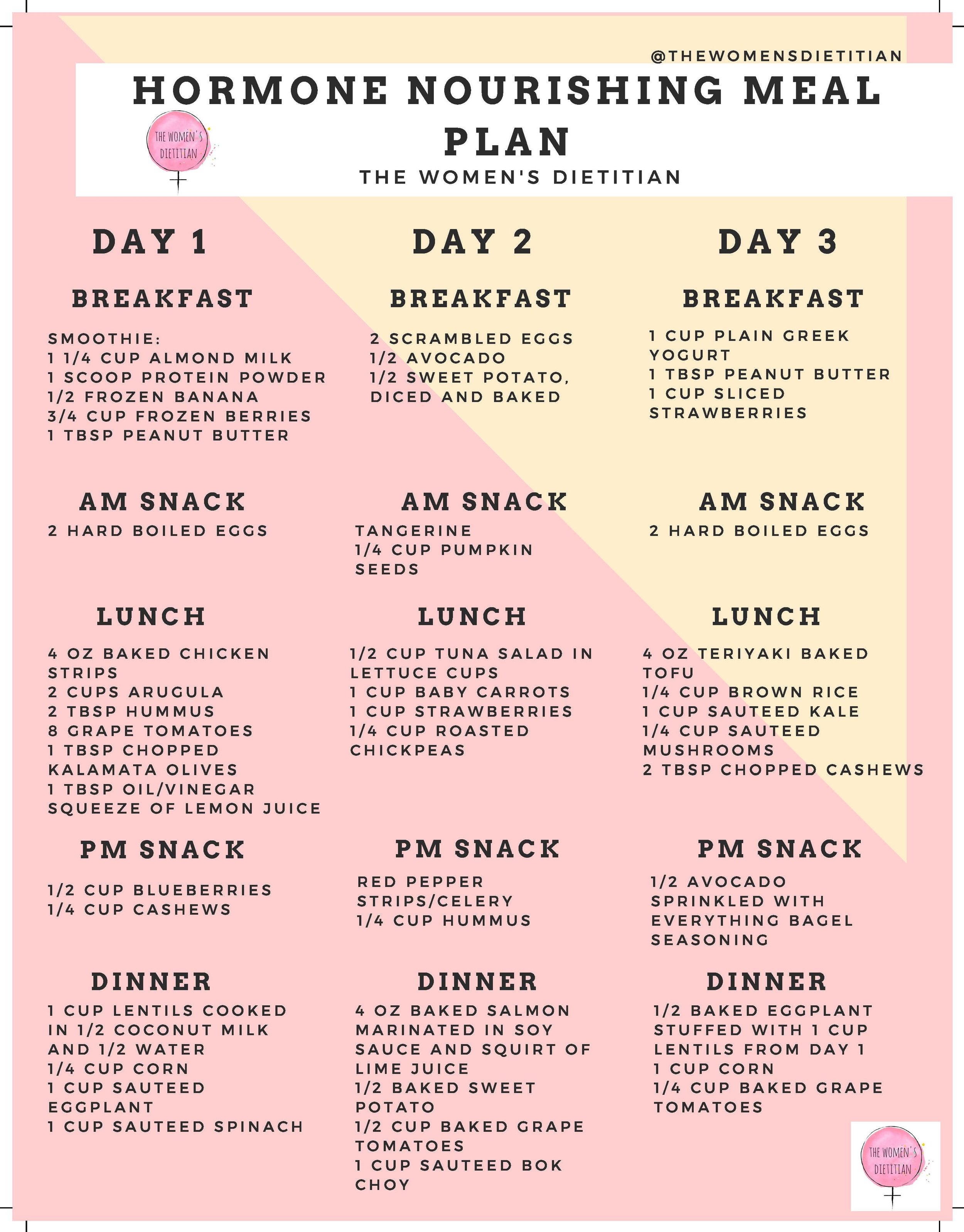Nourish Your Hormones With Food
Cory Levin, MS, RDN
Sorry to burst your bubble babe, but proper hormone balance doesn’t come down to just one smoothie bowl or one cup of sprouted pumpkin seeds.
Instead, it involves a multi-pronged collective effort among your gut, stress levels, brain, genetics, lifestyle choices, nutrition, and sleep habits. We may not be able to swap our DNA or completely rewire our brains but making small changes to what we’re putting into our bodies has profound effects on our unique hormonal rhythms.
It’s important to pay attention to subtle cues that your hormones may be out of whack. Maybe your cycles have been lasting 45 days instead of your usual 28, perhaps your acne is reverting back to the way it looked when you were 15, or you’re wondering why you’re losing hair on your head only to find it sprouting on your chin.
Your body is your barometer. if something doesn’t feel quite right, lean in and listen to it.
The core tenets of hormone balance are as follows:
Fat
Eating enough fat (yep, even moderate amounts of saturated fat) is critical for healthy hormone balance – its one of the ways our bodies create cholesterol. Cholesterol, after all, is the building block of our sex hormones. Progesterone, testosterone, and estrogen cannot be produced without cholesterol.
Cutting out fats or eating too little of them can be extremely detrimental to our fertility, hormone balance, and overall health. Plus, fats play a role in regulating mood swings just before our periods begin. Great sources of healthful fats include avocado, coconut oil, nuts, seeds, nut butter, meats, and full-fat dairy.
Blood sugar balance
Keeping blood sugars nice and steady is incredibly important for our hormones. When our blood sugar is all over the map, it can actually stresses our bodies out and leads to an increase in our cortisol. Cortisol is produced in our adrenal glands to help us cope with stress and is actually the precursor for progesterone, our dominant hormone during the last half of our cycle (aka our luteal phase).
Progesterone needs to be produced in robust amounts in order to keep PMS symptoms at bay and achieve and sustain a pregnancy. When our bodies are busy churning out cortisol due to blood sugar swings, guess what it’s NOT doing? Pumping out progesterone!
This can put us in a state of estrogen dominance where PMS becomes exacerbated and this can also lead to problems getting pregnant. A great way to keep blood sugars balanced is by adding in some protein, fat, and/or fiber whenever we’re consuming a food high in carbohydrates to slow the absorption of glucose into our bloodstream.
Antioxidants
We all know antioxidants are good for us, but when it comes to hormone balance, they play an especially crucial role. The delicate machinery of our hormones is easily upset by the amount of toxins our bodies encounter on a daily basis. Think about how many chemicals are in a single bottle of shampoo– not to mention our makeup, medication, household cleaners, nail polish, bedding, food storage containers, and more.
Many of these chemicals can be considered endocrine disruptors because they may negatively influence our reproduction, fertility, blood sugar regulation, body weight, and more. While it’s impossible to avoid all of the different chemicals we may potentially be exposed to, it’s vital to support the body’s ability to detoxify the daily onslaught of possible endocrine disruptors.
How do we do that?! By eating a ton of antioxidants to fight some of the free radicals that may damage our cells and disrupt our fragile hormonal flow! Foods high in antioxidants include fruits and vegetables– make sure you’re consuming many different colors because variety is key here!
Fiber
We all know fiber is king when it comes to gut health, but it also plays a vital part when it comes to hormone balance. Fiber actually helps us detoxify circulating estrogen, meaning it helps us clear out the excess so that our estrogen can more readily become balanced alongside progesterone.
Fiber also helps reduce prostaglandins, the lipid compounds responsible for painful periods and breast tenderness. In addition, fiber helps keeps our blood sugars balanced so we’re not pumping out cortisol instead of progesterone. Good sources of fiber (especially the kinds that help us clear out extra estrogen) include cauliflower, broccoli, cabbage, bok choy, Brussels sprouts, arugula, and collards.
Below is an easy 3-day meal plan outlining EXACTLY what you need to eat for optimal hormone balance. Meals and snacks are easy to assemble, contain ingredients that are wallet-friendly (no strange, outrageously expensive “superfoods” here), and include all of the important hormone-nourishing variables above showing you that eating to balance your hormones is not only doable, but delicious.
Cory Levin is a Registered Dietitian Nutritionist and women's health expert. Cory is the founder and principal of The Women's Dietitian and Instagram account @thewomensdietitian, a private practice and digital platform for women seeking nutrition support for hormone balance, fertility, digestion, and weight management.



